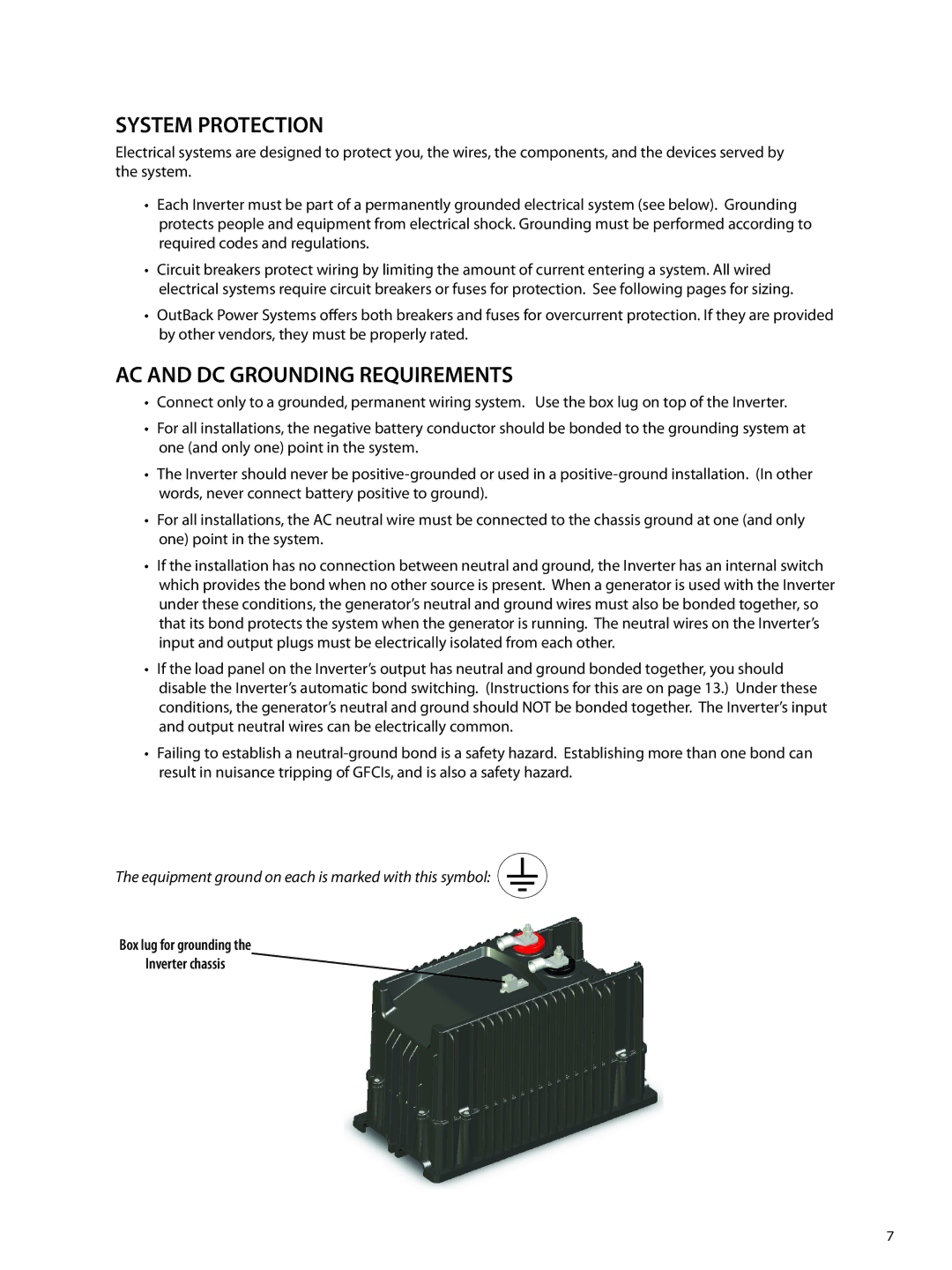
SYSTEM PROTECTION
Electrical systems are designed to protect you, the wires, the components, and the devices served by the system.
•Each Inverter must be part of a permanently grounded electrical system (see below). Grounding protects people and equipment from electrical shock. Grounding must be performed according to required codes and regulations.
•Circuit breakers protect wiring by limiting the amount of current entering a system. All wired electrical systems require circuit breakers or fuses for protection. See following pages for sizing.
•OutBack Power Systems offers both breakers and fuses for overcurrent protection. If they are provided by other vendors, they must be properly rated.
AC AND DC GROUNDING REQUIREMENTS
•Connect only to a grounded, permanent wiring system. Use the box lug on top of the Inverter.
•For all installations, the negative battery conductor should be bonded to the grounding system at one (and only one) point in the system.
•The Inverter should never be
•For all installations, the AC neutral wire must be connected to the chassis ground at one (and only one) point in the system.
•If the installation has no connection between neutral and ground, the Inverter has an internal switch which provides the bond when no other source is present. When a generator is used with the Inverter under these conditions, the generator’s neutral and ground wires must also be bonded together, so that its bond protects the system when the generator is running. The neutral wires on the Inverter’s input and output plugs must be electrically isolated from each other.
•If the load panel on the Inverter’s output has neutral and ground bonded together, you should disable the Inverter’s automatic bond switching. (Instructions for this are on page 13.) Under these conditions, the generator’s neutral and ground should NOT be bonded together. The Inverter’s input and output neutral wires can be electrically common.
•Failing to establish a
The equipment ground on each is marked with this symbol: ![]()
Box lug for grounding the
Inverter chassis
7
